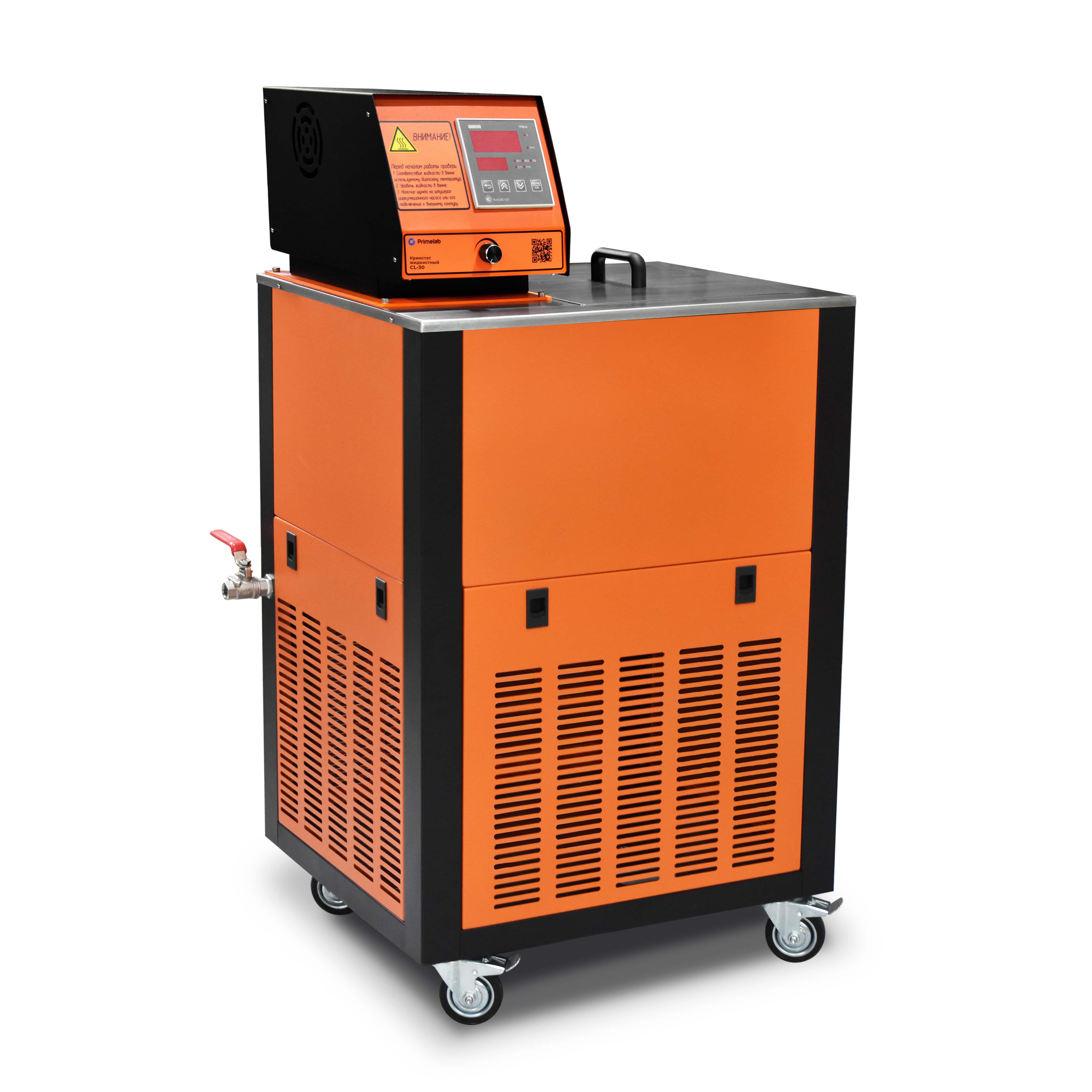Catalog
Search
69 products
View:
- Selected: 0Applying
- Selected: 0Names
- Selected: 0Manufacturer
- Selected: 1Made in
- Selected: 0Additional
View:
69 products
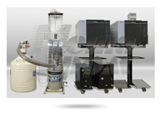
UKK-6 CRYOCONCENTRATION UNIT
The UKK-6 cryoconcentration unit (hereinafter referred to as UKK-6) is an integral part of an automated chromatographic complex based on the Kristallux-4000M gas chromatograph and is designed to control the quality of 6.0 grade helium and 6.0 grade hydrogen for the presence of micro-impurities of Ne, CH4, O2+Ar, N2, CO, CO2 and H2.AUKK-6 concentrates gaseous impurities (Ne, H2, O2+Ar, CH4, CO and CO2) in helium and hydrogen in sorption columns at liquid nitrogen temperature, followed by focusing and thermal desorption of accumulated impurities and introducing them into a gas chromatograph to determine their qualitative and quantitative composition.
technical specifications
The analyzed gas is Helium, hydrogen
Temperature of sorption columns during adsorption, 0C -196
Maximum temperature of thermal desorption, 0C 400
The pressure of the analyzed gas, not more than 0.4 MPa
Inlet gas pressure, not more than 1.0 MPa
Total analysis time, no more than 17 minutes
Volume of a vessel with liquid nitrogen, l 6
Automatic replenishment (topping up) of liquid nitrogen before each concentration cycle -
Supply voltage 230-240V, 50-60Hz
Power consumption, no more than W0C 2000
Overall dimensions (WxDxH), mm 30
Weight, not more than 0.02-1.7 kg
NPF "META-KHROM"
Yoshkar-Ola
Produced in: Yoshkar-Ola, Mari El
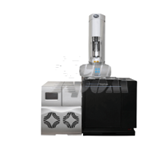
GC-MS CHROMATOGRAPH SYSTEM "CRYSTALLUX-4000M" WITH MSD "MAESTRO-AMC"
GC and MS interface Capillary direct interface, independent temperature control (50-300 0 S)
The filament of the cathode (filament) is a double filament for electron ionization (EI), the maximum current is 300 µA. Double thread increases the service life. Two independent switchable cathodes Temperature of the ion radiation source
Independent heating and temperature control, maximum value 350 0 C (adjustable)
Transparent polymer window on the front panel there is no visual control of the state of the cathodes
Ion radiation source
Lenses made of ceramic and with a patented coating enhance the focusing effect, which significantly increases the efficiency of ionization, an electrode with a patented reflective surface improves focusing
Tubular lenses enhance the focusing effect, which significantly increases the ionization efficiency, an electrode with a patented reflective surface improves focusing
Energy ionization 10-100 eV
The mass analyzer is a high-precision quadrupole with a filter that reduces the contamination of the main quadrupole and eliminates the influence of photonic noise on the analysis
High-precision molybdenum quadrupole with prequadrupole (replaceable), which reduces the contamination of the main
The detector is an electronic multiplier with a high-voltage secondary emiting electrode (dinode) of high energy 3D geometry to improve sensitivity. The amplifier of weak voltage signals effectively reduces network noise, improves the signal-to-noise ratio during electron ionization and provides a large linear dynamic range.
It is possible to install an additional detector
Mass range 2.0-1200 a.e.m. 1.5-1050 a.e.m.
Mass stability Less than 0.1 a.e.m. for 48 hours
Signal ratio noise
At least 1500:1 with mass to charge (m/z) 272
At least 150:1 with mass to charge (m/z) 272 (with signal filtering 500:1)
Linearity Not less than 107 Not less than 106
Precision < 5% RSD 9n=7, SIM, 100 fg OFN)
no
System sensitivity
IDL < 10 fg (SIM mode, OFN
according to m/z 272)
no
Maximum
scanning speed
20000 a.m./s 11000 a.m./s
Operating modes Scap, SIM, Scan/SIM, MicroScan and the innovative
Flexible-SIM algorithm for finding trace amounts of components
no
Setting Automatic setting
MSD on the PFTBA spectrum and
m/z control of oxygen, nitrogen
and water
no
Pumping pump Oil plate-rotor vacuum pump with a pumping speed of 66 l/min
Oil plate-rotor vacuum pump with a pumping speed of 165 l/min
Turbo pump Turbo molecular pump with magnetic levitation, with a pumping speed of 85 l/s (can be replaced by 300 l/s)
Turbo molecular pump with magnetic levitation, with a pumping speed of 71 l/s (possible replacement by 260 l/s)
RF
detector power
Allows you to use three points for calibration in the entire
mass range and get good linearity in
scanning mode
Software
Rus./ Eng. The ability to search and extract structural,
graphical formulas. Library of 240,000 spectra.
The ability to isolate individual components from
overlapping peaks. In addition to spectra and compounds,
the library contains the element name, formula,
molecule structure, molecular weight, CAS number, analysis conditions, synonyms, and estimated or measured
retention readings. The NIST EI library contains: drugs,
metabolites and poisons, pesticides and fungicides, organic
substances present in soil, water and air,
amino acids, di- and tripeptides, common sample pollutants,
common analytical derivatives, etc.
Ethernet interface, remote access function implemented
Touch screen Display of parameters and
monitoring of system status
no
Built
-in power supply
Allows you to turn off the detector
in normal mode if
there is no power supply violation
NPF "META-KHROM"
Yoshkar-Ola
Produced in: Yoshkar-Ola, Mari El
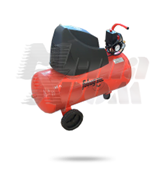
FUBAG TYPE AIR COMPRESSOR
Household oil—free piston compressor - designed specifically for non-professional users.
Technical specifications:
Capacity, l/min 230
Pressure, atm 8
Engine power, kW 1,1
Receiver volume, l 50
Noise level, 80 dB
Weight, kg 35
Overall dimensions (length×depth×height), mm 750×320×700
Single-phase mains voltage 220 V, 50 Hz
NPF "META-KHROM"
Yoshkar-Ola
Produced in: Yoshkar-Ola, Mari El

Thermal Conductivity Detector(accident)
It is used to determine hydrogen, oxygen, CO and combustible hydrocarbon gases, and its sensitivity to these compounds is higher than the sensitivity of an accident. The most widespread TCD was obtained for the analysis of hydrogen and oxygen, tk. its sensitivity to them is almost an order of magnitude higher than that of an accident. The principle of operation is based on fixing the thermal effect of catalytic combustion of the sample on the surface of the platinum filament.
Technical characteristic:
1.8*10`10 g/ml of hydrogen
NPF "META-KHROM"
Yoshkar-Ola
Produced in: Yoshkar-Ola, Mari El
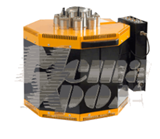
MEASURING AND COMPUTING COMPLEX "VULKAN-2005M" AND "VULKAN-2005M1 VACUUM TESTER"
The measuring and computing complex "Vulkan-2005M" and "Vulkan-2005M1 Vacuum Tester" are designed to measure the pressure of vapors and gases in a given volume when determining the thermal stability of substances in the isothermal mode, carried out according to the certified methodology of the customer, developed specifically for each substance. The CPI is included in the State Register of Measuring Instruments.
technical specifications
The measurement range of barometric pressure is from 86.6 kPa to 106.7 kPa.
The absolute pressure measurement range should be from 5 kPa to (Ratm. +250) kPa, where Ratm. – atmospheric pressure.
The limit of permissible error of pressure measurement does not exceed the values of:
– barometric - ± 0.5 kPa.
– overpressure - ± 2.0 kPa.
– total (barometric + excessive) - ± 2.5 kPa.
The temperature range in the reaction volumes of primary converters is from +50 to +280 °With the use of reusable fluoroplastic gaskets, from 280 to 400℃ with the use of disposable aluminum gaskets.
Instability of maintaining the set temperature in thermostats for 10 minutes no more than ± 0.1 ° C.
The discreteness of setting the temperature of temperature control is 0.1 ° C.
The error of setting the temperature of temperature control does not exceed ± 2 ° C.
The total volume of the glass is 20 ml.
Minimum vacuum: 5 kPa.
The IVC consists of up to 4 thermostats with primary converters, 8 in each thermostat.
The time interval between measurement cycles in automatic mode is 1 second.
The emergency protection is triggered when the values, pressure or temperature set in the control program are exceeded. The hardware overheat protection of the thermostat is triggered when the maximum operating temperature of the complex is exceeded.
The IVC is powered from an AC mains voltage of 220V with an acceptable deviation from minus 15% to +10% frequency (50 + 1) Hz with a coefficient of nonlinear distortion of no more than 5%.
The output time of the thermostats to the mode from the moment they are turned on does not exceed 3.5 hours.
The power consumption of the CPI, no more than 4 kW.
Overall dimensions of one thermostat, (width × depth × height), no more than -450×460×600mm.
The weight of one thermostat, no more than 32 kg.
The continuous operation time of the CPI is at least 72 hours.
NPF "META-KHROM"
Yoshkar-Ola
Produced in: Yoshkar-Ola, Mari El
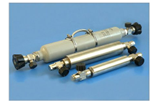
GAS SAMPLER
They are used for sampling natural and liquefied gas. In the company "Meta-chrome" you can buy the following gas samplers:
PGO-50M;
PGO-400;
BDP 12-2-9,8 (aluminum, subcompact);
PU.
The PGO-50 M, PGO-400 and PU models are used to take samples of liquefied hydrocarbon gases that are affected by the overpressure of stationary tanks and or their own vapors. Sampling is carried out according to GOST 14921-78.
The BTP 12-2-9.8 device is used for sampling, storing and transporting samples of gases that are under pressure. The device is made of aluminum and is designed for a small liter. Sampling is carried out according to GOST 31370-2008.
INDICATOR BDP7 BDP7 BDP12 BDP12 BDP16 PGO-400 PGO-50M
Volume, l. 0,7 1 2 4 10 0,4 0,05
Outer diameter, mm 70 70 120 120 160 50 35
Length, mm 360 480 368 593 800 400 325
Working pressure, MPa 9.8 5.0 9.0
The number of refills up to the operating pressure, times at least 5000
Case material AMg6M 12X18
NPF "META-KHROM"
Yoshkar-Ola
Produced in: Yoshkar-Ola, Mari El

THERMAL DESORBER TDS-2
TDS-2 is a syringe (see Fig. 1), which is installed on the evaporator of the chromatograph. The device is equipped with a crane that cuts off the carrier gas line when removing the rod with the sorption tube from the thermal desorber. When the tap is open, the stem is lowered to the lower position and the sorption tube is inserted into the evaporator brought to the desired temperature. In the conditions of the upper position of the rod, it is also possible to displace air by purging the sorption tube with a carrier gas.
Technical characteristics of TDS-2
The heating time to the desorption temperature is no more than 1 sec.
The cooling time when moving to a cold zone is no more than 10 seconds.
Outer diameter 5-0.1 mm
Dimensions of the sorbent chamber: diameter 3.4+0.3 mm
length 52 mm (470 µl)
Volume (for solid samples) 90 µl
Operating temperature ranges* from 50° to 400 °C
Overall dimensions (height with the rod fully extended) 320 mm.
Weight 0.325 kg.
NPF "META-KHROM"
Yoshkar-Ola
Produced in: Yoshkar-Ola, Mari El
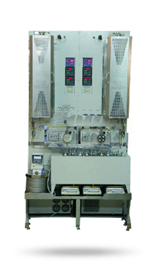
TWO-CHANNEL LABORATORY INSTALLATION
The bench laboratory unit is designed to test the adsorption properties of silica gels, protective layers and selective hydrogenation catalysts.
Ambient temperature from +10 to +35C;
The relative humidity of the air is not more than 80% at a temperature of 25C;
the power supply is a three- or single-phase AC network with a voltage of 220 V ± 10% with a frequency of 50 Hz.
The average service life of the installation is 5 years.
TECHNICAL CHARACTERISTICS
Operating pressure range, 0.1-10 MPa
Reactor operating temperature range, 0C 50÷600
The flow rate range of the pump forming the investigated raw material flow, ml/min 0.1-10
Volume of raw material capacity, l not less than 5
Operating temperature range of the raw material tank, 0C 30÷80
Operating temperature range of high and low pressure separators, 0C 30÷80
Flow range H2, mm/min 50÷3000
The maximum pressure at the outlet of the regulator is H2, MPa 10
Power consumption not more than, kW 6
Overall dimensions, mm 800×1300×2000
The operation mode is cyclic
NPF "META-KHROM"
Yoshkar-Ola
Produced in: Yoshkar-Ola, Mari El
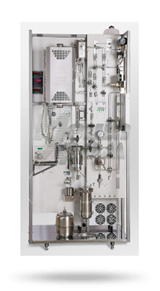
UNIVERSAL BENCH LABORATORY INSTALLATION FOR THE STUDY OF BASIC ORGANIC SYNTHESIS PROCESSES IN A REACTOR WITH A FIXED CATALYST LAYER
Monophase gas (the phase state of reagents at room temperature is liquid or gas).
Monophase liquid (the phase state of reagents at room temperature is liquid).
Two-phase (gas-liquid heterophase system).
Temperature: operating range 500C – 6000C, 8000C.(three-zone heating furnace).
Pressure: operating range 0.1 – 60, 100, 200 MPA.
In the photo: A universal bench laboratory installation for the study of basic organic synthesis processes in a reactor with a fixed catalyst layer
The unit is designed (tested) for the study of a wide range of heterogeneous catalytic reactions, including:
Hydrogenation processes in the gas phase.
Hydrogenation processes in the liquid phase.
Gas-phase dehydration of aliphatic and aromatic alcohols.
Dehydration of aromatic alcohols in the liquid phase.
Alkylation of aromatic hydrocarbons with olefins and alcohols.
Hydroalkylation of aromatic compounds with ketones.
Dehydrogenation of chemical compounds of various classes.
NPF "META-KHROM"
Yoshkar-Ola
Produced in: Yoshkar-Ola, Mari El
